|
Getting your Trinity Audio player ready...
|
When it comes to cutting 1” Schedule 40 black steel pipe, there’s no shortage of opinions or options. Every trade pro has their go-to method, whether its brute force grinding or the smooth glide of a dedicated pipe cutter. But which tool actually performs best in speed, cut quality, and overall usability?
At Ohio Power Tool, we decided to find out. We’re on the front lines with professionals every day, hearing their feedback, fixing their tools, and testing what really works. Our mission since 1983 has been to help pros find the Right Tool for the Job, and this test puts that motto to work.
We lined up eight different tools, from handheld multitaskers to purpose-built pipe cutters, and put them through the same challenge: cutting 1″ black steel pipe locked in a vise. Each tool made five test cuts, timed from start to finish, to measure speed, cut quality, accuracy, and usability.
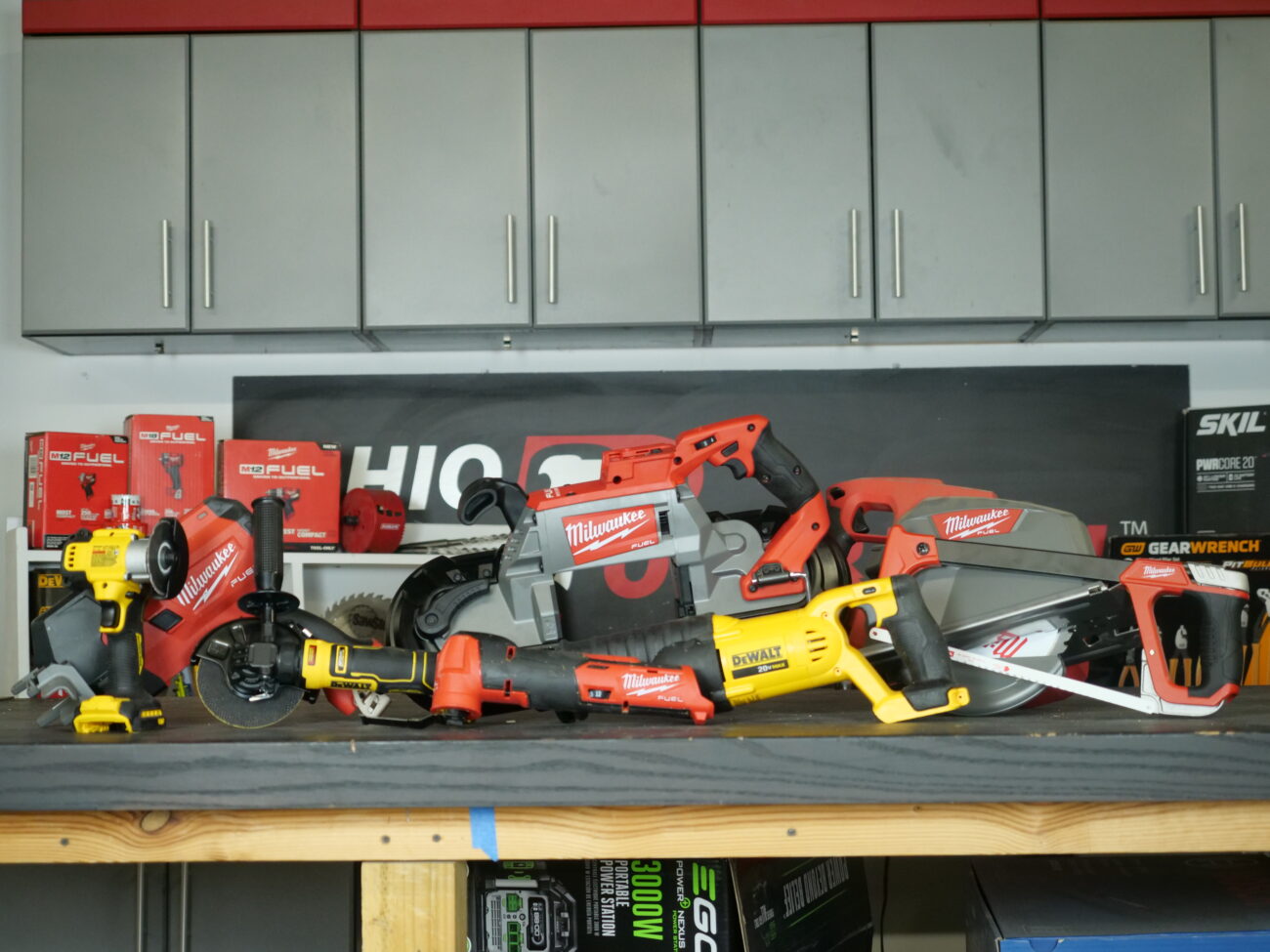
The goal wasn’t to crown one brand a winner, but to see how each type of tool performs for this specific job and maybe settle a few jobsite debates along the way.
Before jumping into the results, let’s talk about why this test matters. Our customers ask us the same kinds of questions every day: “Can my tool handle this application?” or “Is it worth upgrading to a new model?” and “Do I really need a specialized cutter?”
We wanted to back up our answers with hard data. Every test we run is about giving you real information from the jobsite and whether you’re a pipefitter making hundreds of cuts, a general contractor handling mixed materials, or a homeowner tackling a renovation project, everyone shares the same goal: How can I make this job easier?
The Test:
Black Steel Pipe vs. Eight Tools
Each tool faced the same material, under the same conditions, with fresh accessories where needed. We tracked the time to complete each cut, inspected the edges for burrs, and judged how straight and clean the finish was.
Milwaukee M12 FUEL Oscillating Multi-Tool (2526-20)
Speed: 2:00 | Quality: 3/10 | Accuracy: 4/10 | Weight: 2 lbs | Performance: 2/10
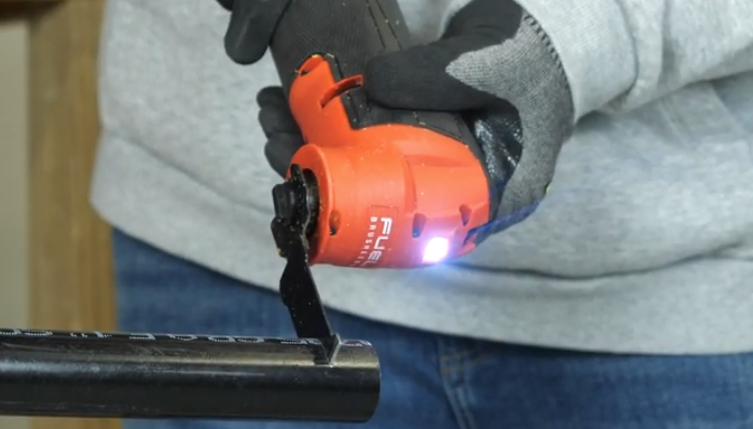
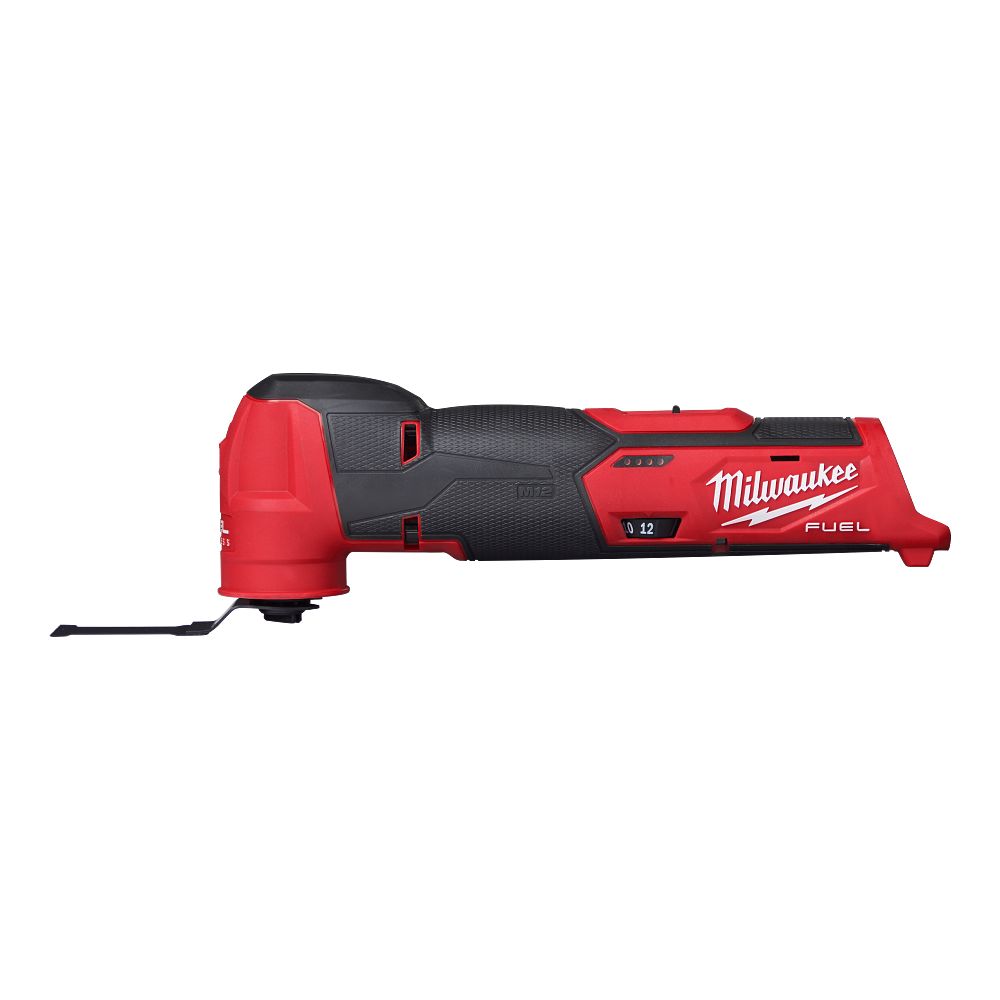
The M12 Oscillating Multi-Tool is a fan favorite for drywall, trim, and metal detail work, but this was a completely different challenge. Even armed with a carbide blade, it struggled badly. After nearly two full minutes of vibration, heat, and frustration, the cut was complete, but barely.
The tool constantly overloaded, forcing multiple restarts, and the vibrations made maintaining accuracy nearly impossible. It’s a phenomenal multitool in its own lane, but this test showed its limits.
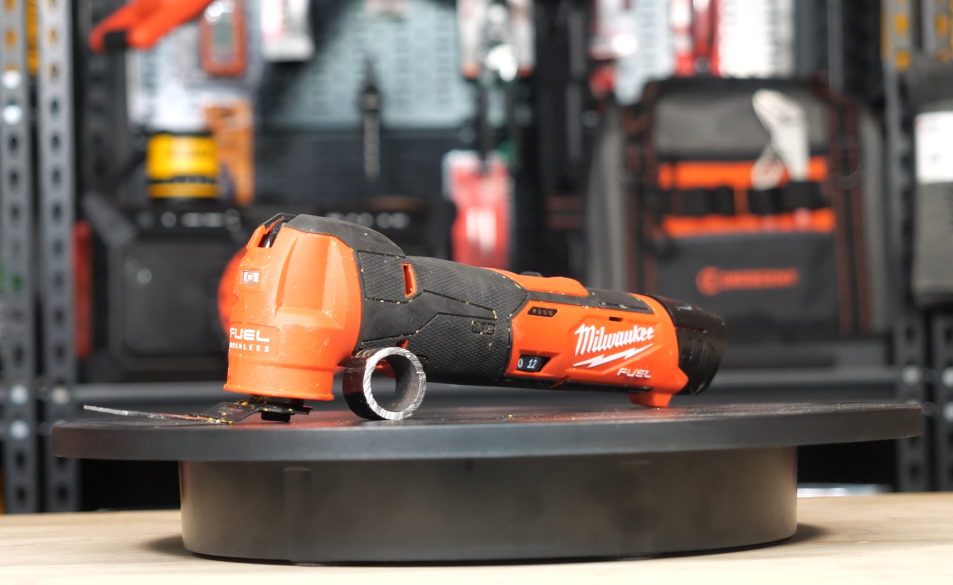
Verdict: Great for drywall and thin sheet metal, keep it far away from black steel pipe.
DeWalt 20V MAX XR Cut-Off Tool (DCS438B)
Speed: 2:52 | Quality: 2/10 | Accuracy: 7/10 | Weight: 4 lbs | Performance: 2/10
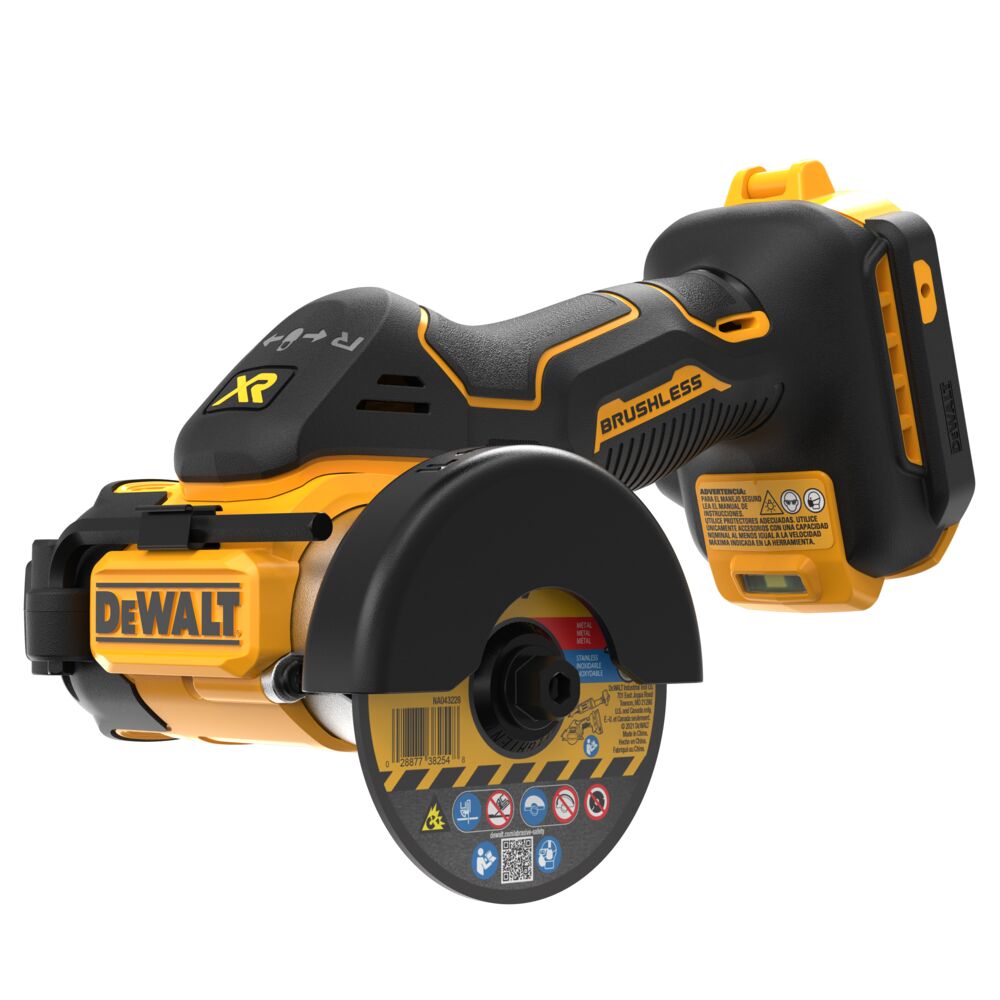

Also known as the “pizza cutter,” this small 3″ cut-off tool has been a surprising hit for sheet metal and general fabrication. Compact, lightweight, and easy to maneuver, it’s a staple in a lot of tool bags.
Unfortunately, against 1″ steel pipe, it just couldn’t keep up. The shallow depth of cut meant rotating the pipe mid-way, and constant pressure management made the process tedious. The result was a rough edge and an exhausted operator.
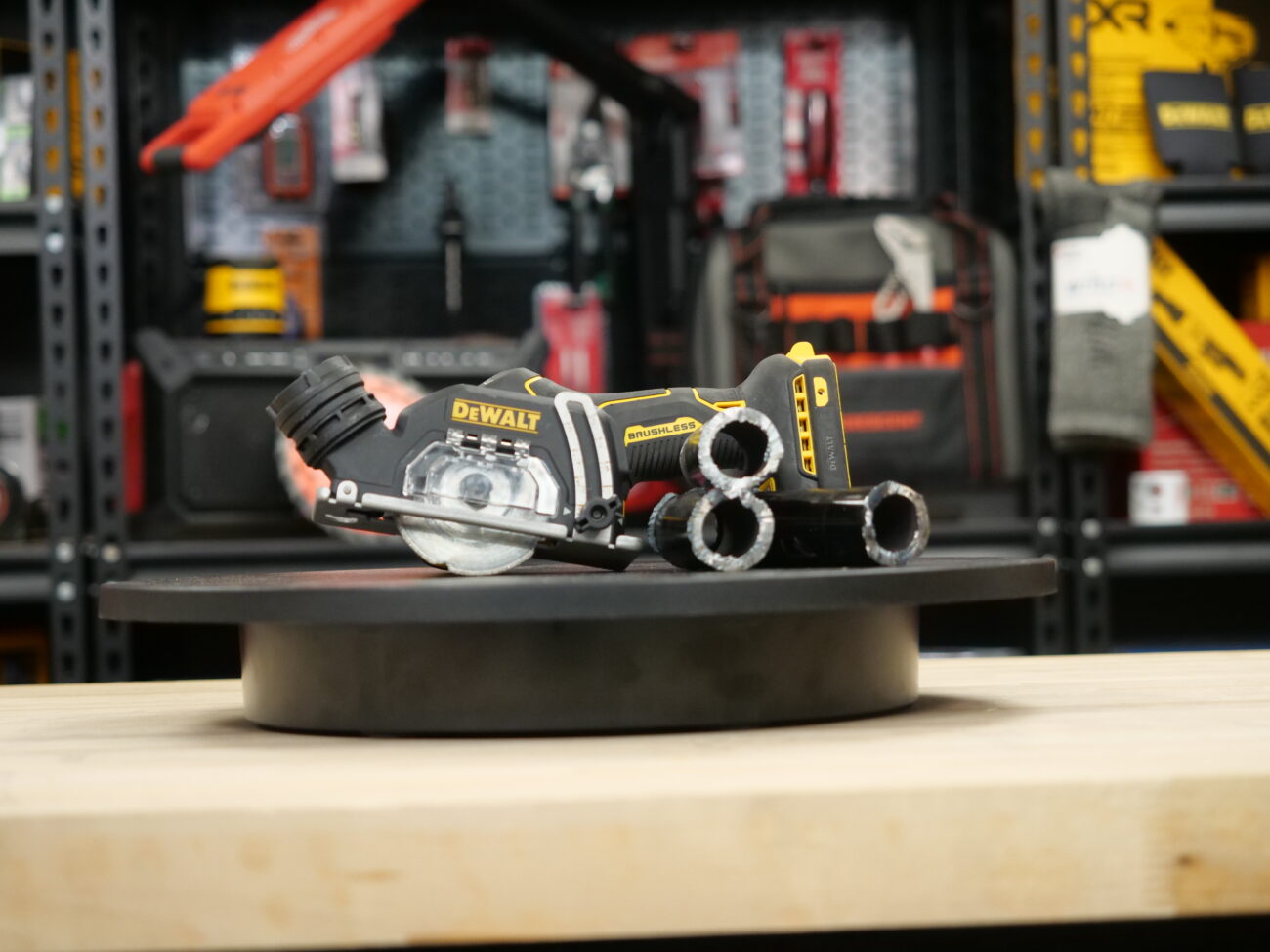
Verdict: Ideal for thin metal or light fabrication, but too slow and shallow for black pipe.
Milwaukee 12″ High-Tension Hacksaw (48-22-0050)
Speed: “A really long time” | Quality: 9/10 | Accuracy: 9/10 | Weight: 1.5 lbs | Performance: 1/10
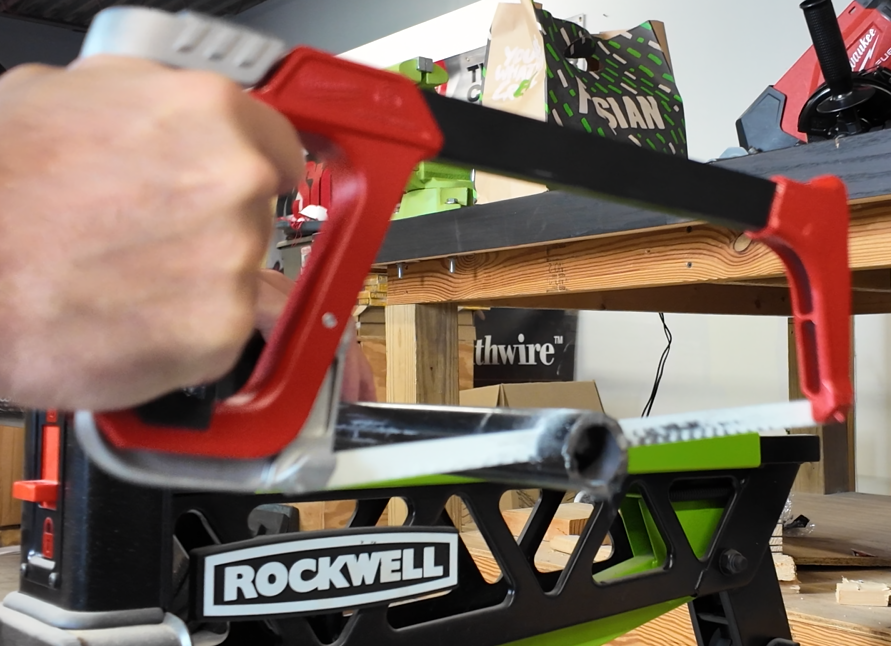
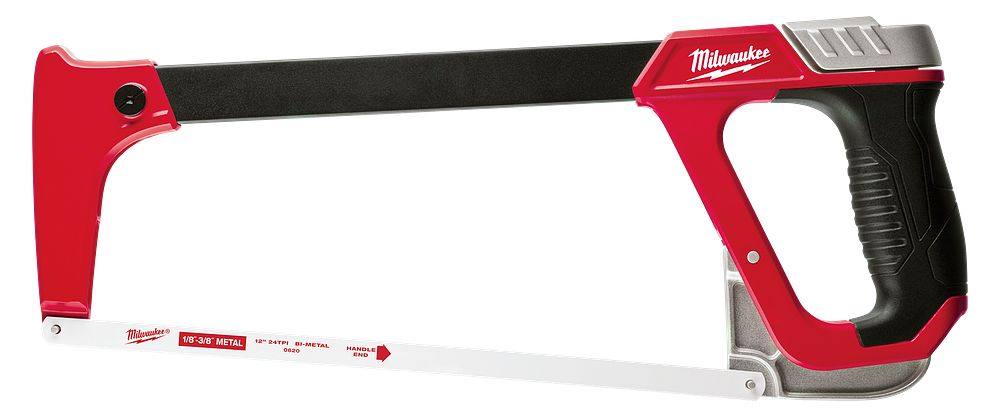
You can’t have a pipe-cutting test without a good old-fashioned hacksaw. And yes, we used one.
Jay volunteered for this one, determined to finish a cut the old-school way. Several minutes and multiple breaks later, he succeeded with a clean, accurate result and almost no burrs. The blade held up surprisingly well, and the saw’s design made it easy to stay online.
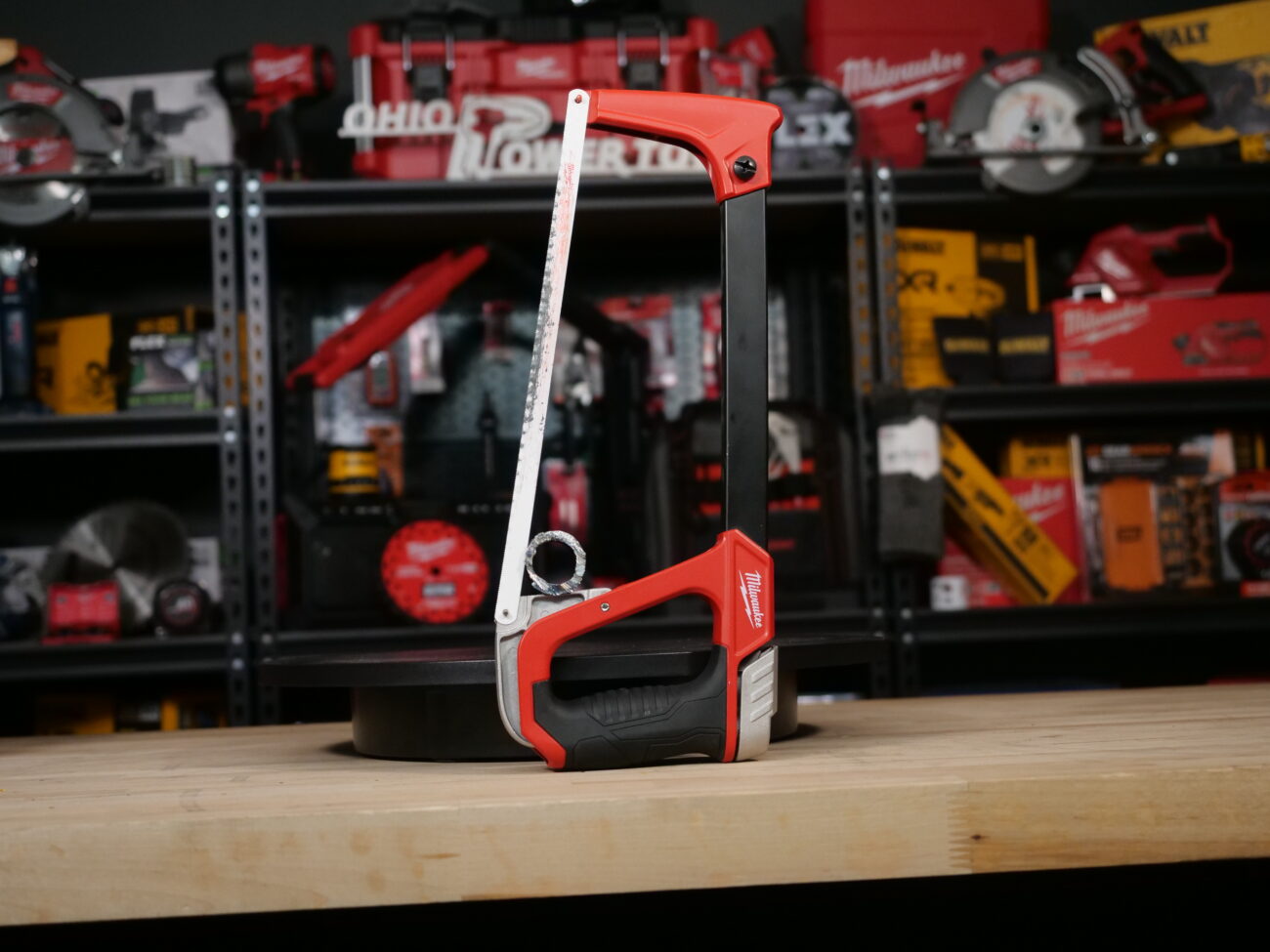
Verdict: Clean and cheap, but painfully slow. Godspeed to anyone cutting more than one pipe this way.
DeWalt ATOMIC 4-1/2″ Angle Grinder (DCG402B)
Speed: 1:00 | Quality: 8/10 | Accuracy: 5/10 | Weight: 5 lbs | Performance: 5/10
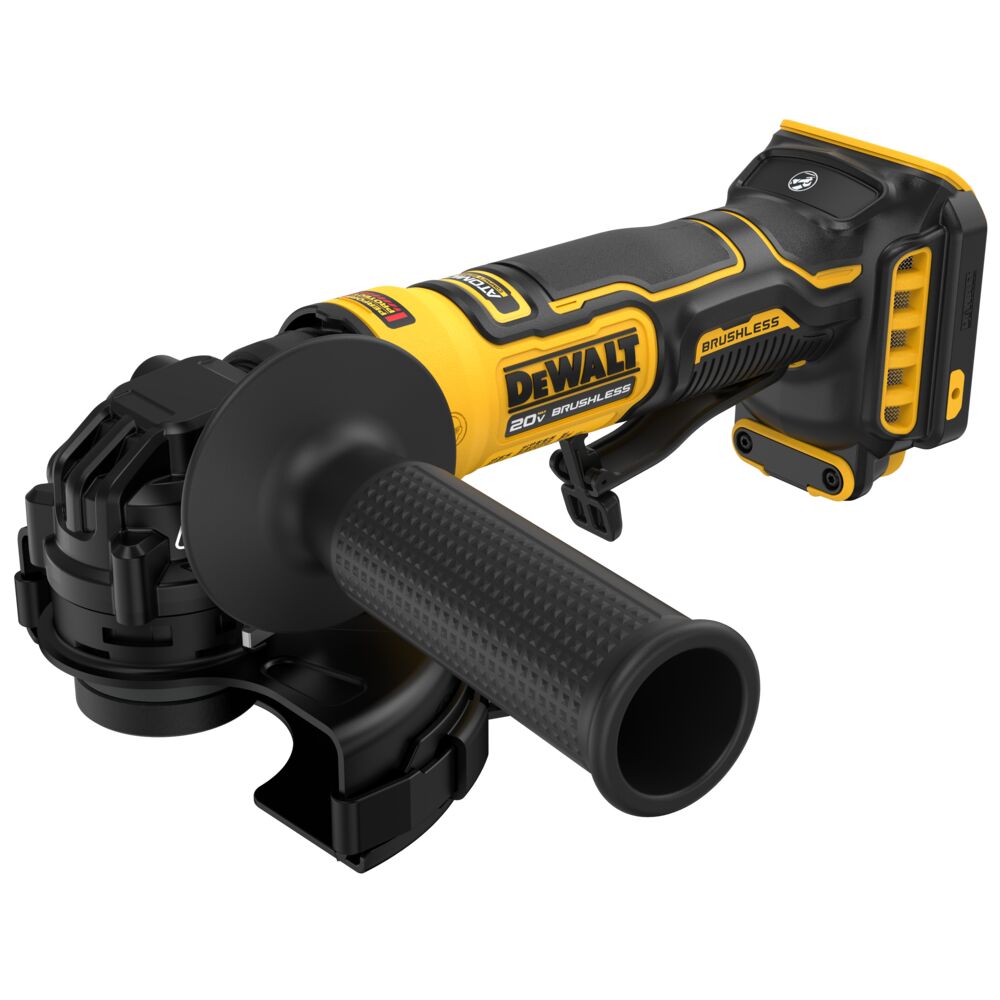
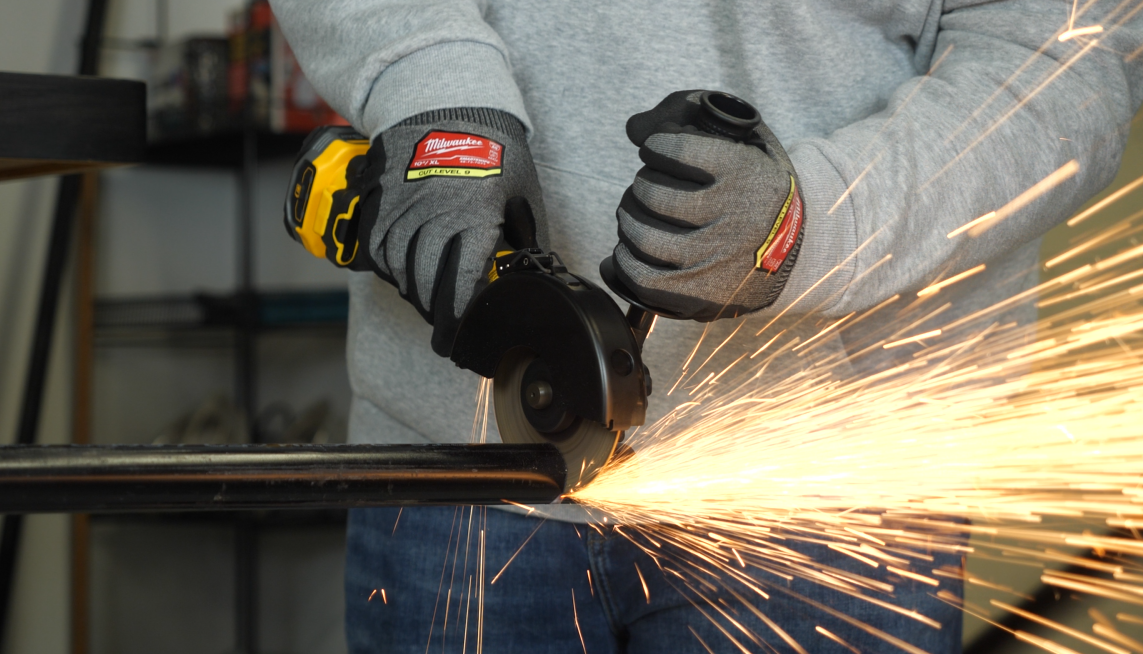
No surprise here, angle grinders can always cut metal. The DeWalt ATOMIC version was chosen for its lightweight and compact feel, giving it solid control throughout the cut. It finished in roughly one minute, throwing a shower of sparks but getting through with confidence.
The trade off? Burrs and sharp edges that required cleanup. A larger 6″ grinder would’ve been faster but heavier and harder to control.

Verdict: Fast and reliable, but expect sparks, noise, and some post-cut finishing work.
DeWalt 20V MAX Reciprocating Saw (DCS380B)
Speed: 0:13 | Quality: 7/10 | Accuracy: 3/10 | Weight: 6 lbs | Performance: 7/10
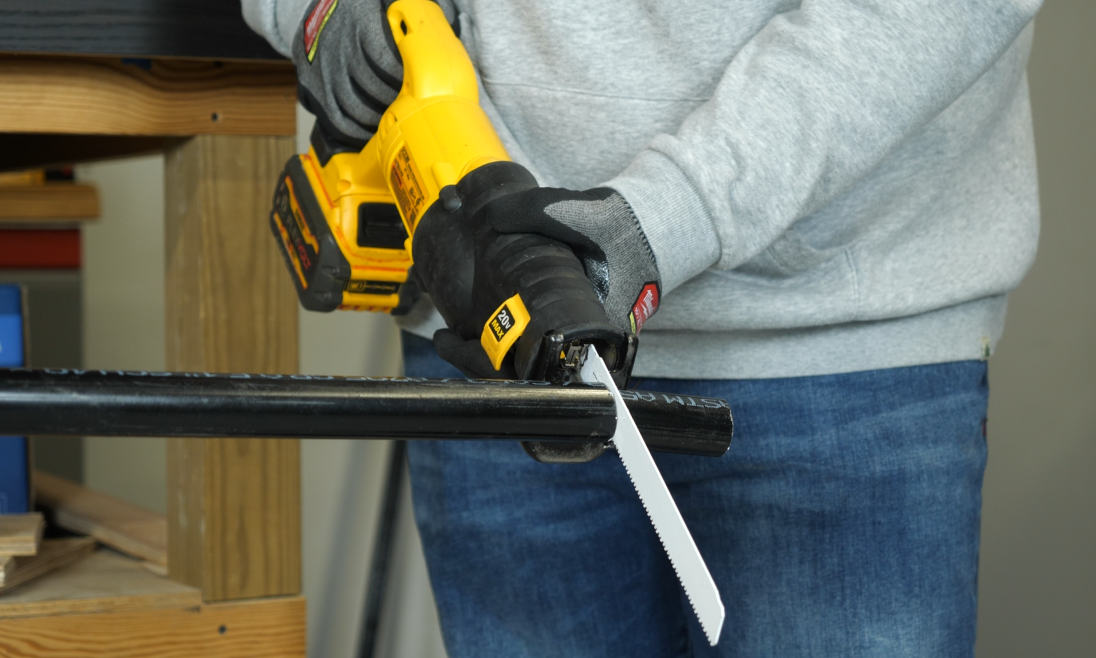

This is one of the most common tools in any contractor’s kit, and for good reason. With the right carbide-tooth metal blade, it tore through the pipe in just 13 seconds.
However, reciprocating saws trade precision for aggression. The cuts were rough and uneven, accuracy was poor, and sparks flew everywhere. But if you’re in demolition mode, that’s not necessarily a bad thing.
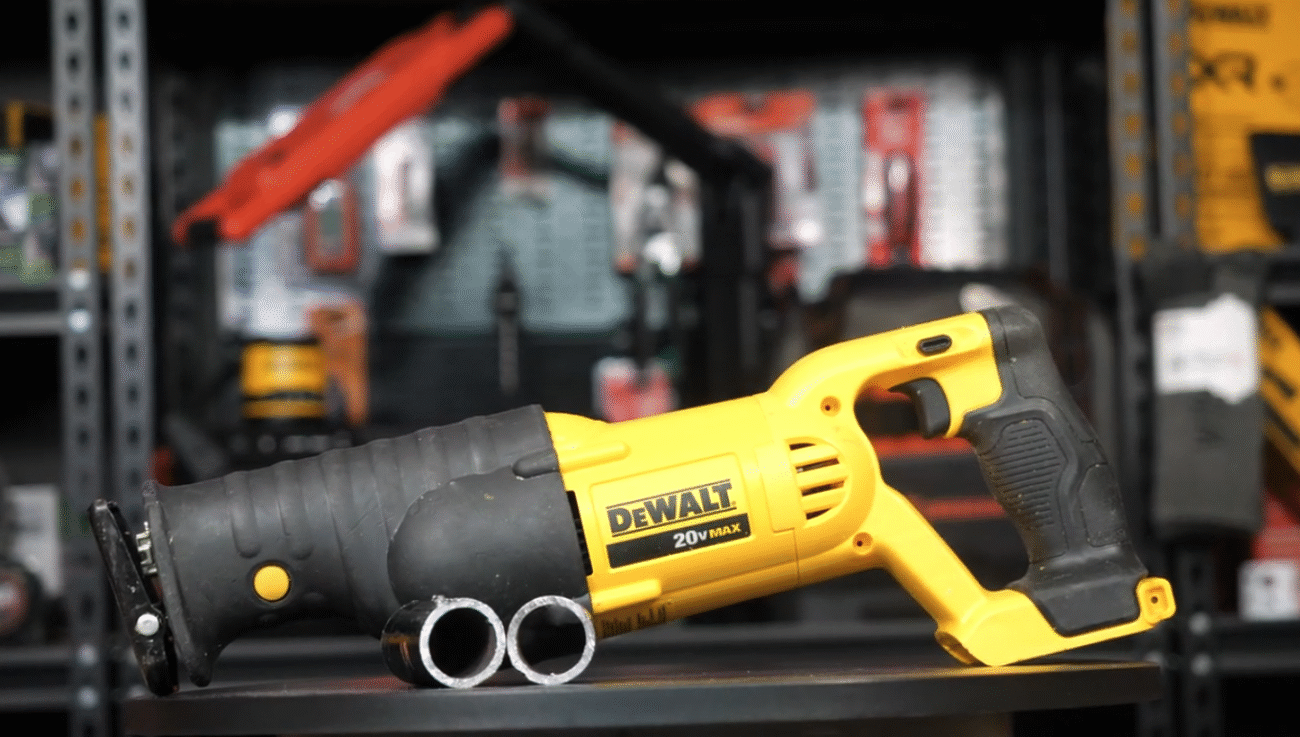
Verdict: Loud, fast, and messy, but perfect for demo work or quick field cuts.
Milwaukee M18 FUEL Metal Cutting Circular Saw
(2982-20)
Speed: 0:04 | Quality: 10/10 | Accuracy: 9/10 | Weight: 14 lbs | Performance: 9/10
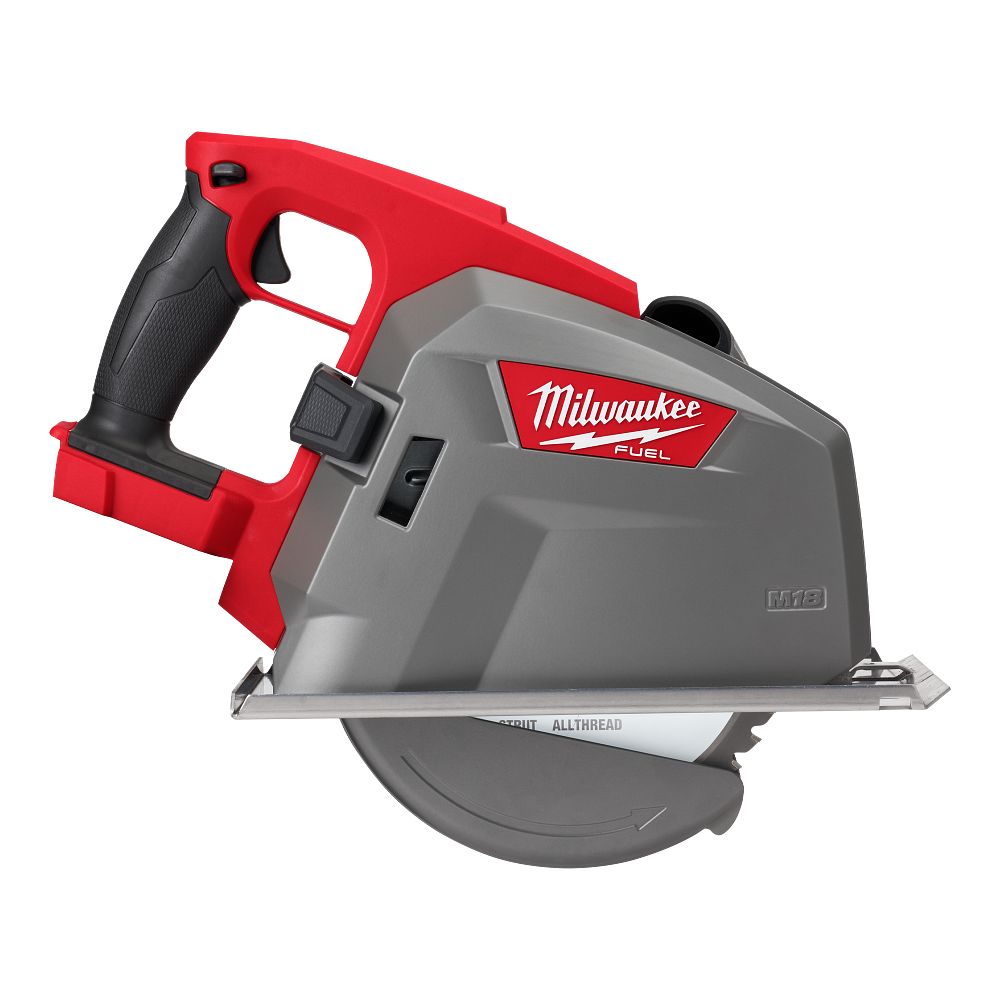
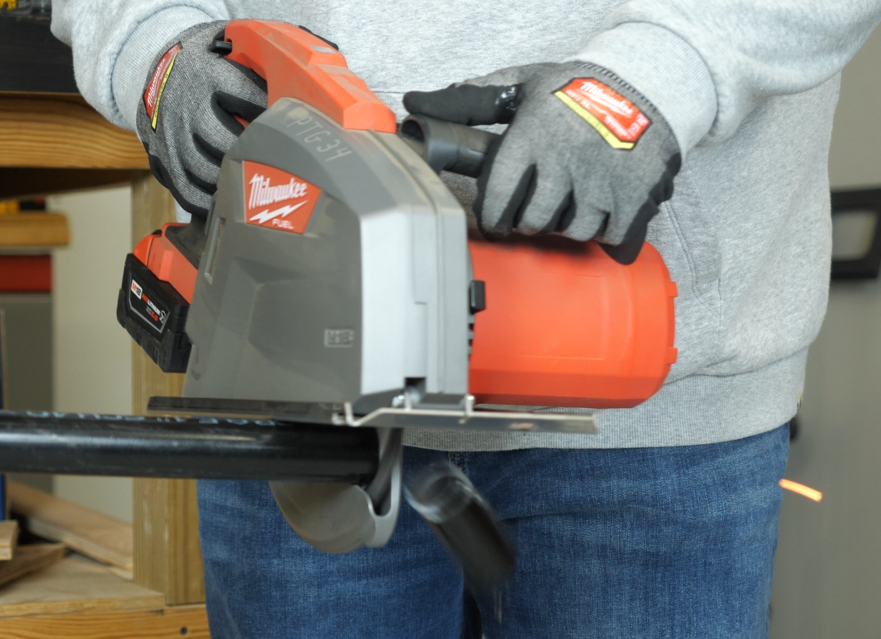
This 8″ metal cutting circular saw is built for this type of material. It ripped through 1″ black steel in just four seconds, producing a near perfect edge that required almost no cleanup.
The precision was excellent, the blade remained cool, and the line stayed perfectly true. While this tool is definitely overkill for small-diameter pipe, it’s an absolute powerhouse for heavier fabrication and large-scale metalwork.

Verdict: Stupid fast, clean, and precise. Ideal for fabrication pros and industrial work.
Milwaukee M18 FUEL 5″ Band Saw (2729-20)
Speed: 0:06 | Quality: 10/10 | Accuracy: 9/10 | Weight: 14 lbs | Performance: 10/10
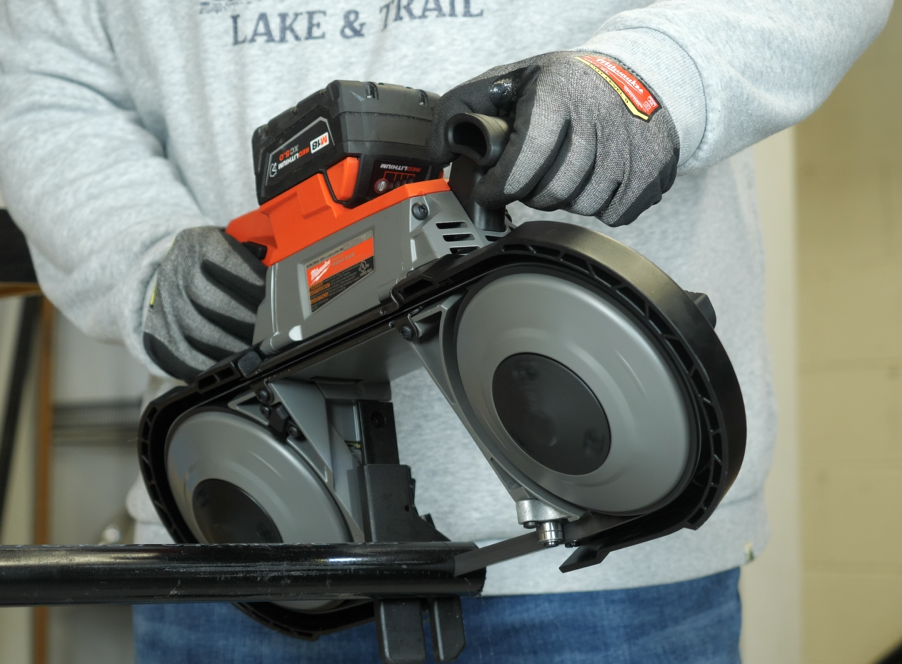

Few tools are as iconic as Milwaukee’s portable band saw. It’s been a staple in pipe-cutting applications for decades, and this test proved why. With just six seconds per cut, it delivered consistent, clean results with minimal noise and sparks.
Accuracy was outstanding, and the edges were smooth with virtually no burrs. The only drawback? Its weight and bulk can make overhead or angled cuts tricky, but compact versions are available for those scenarios.
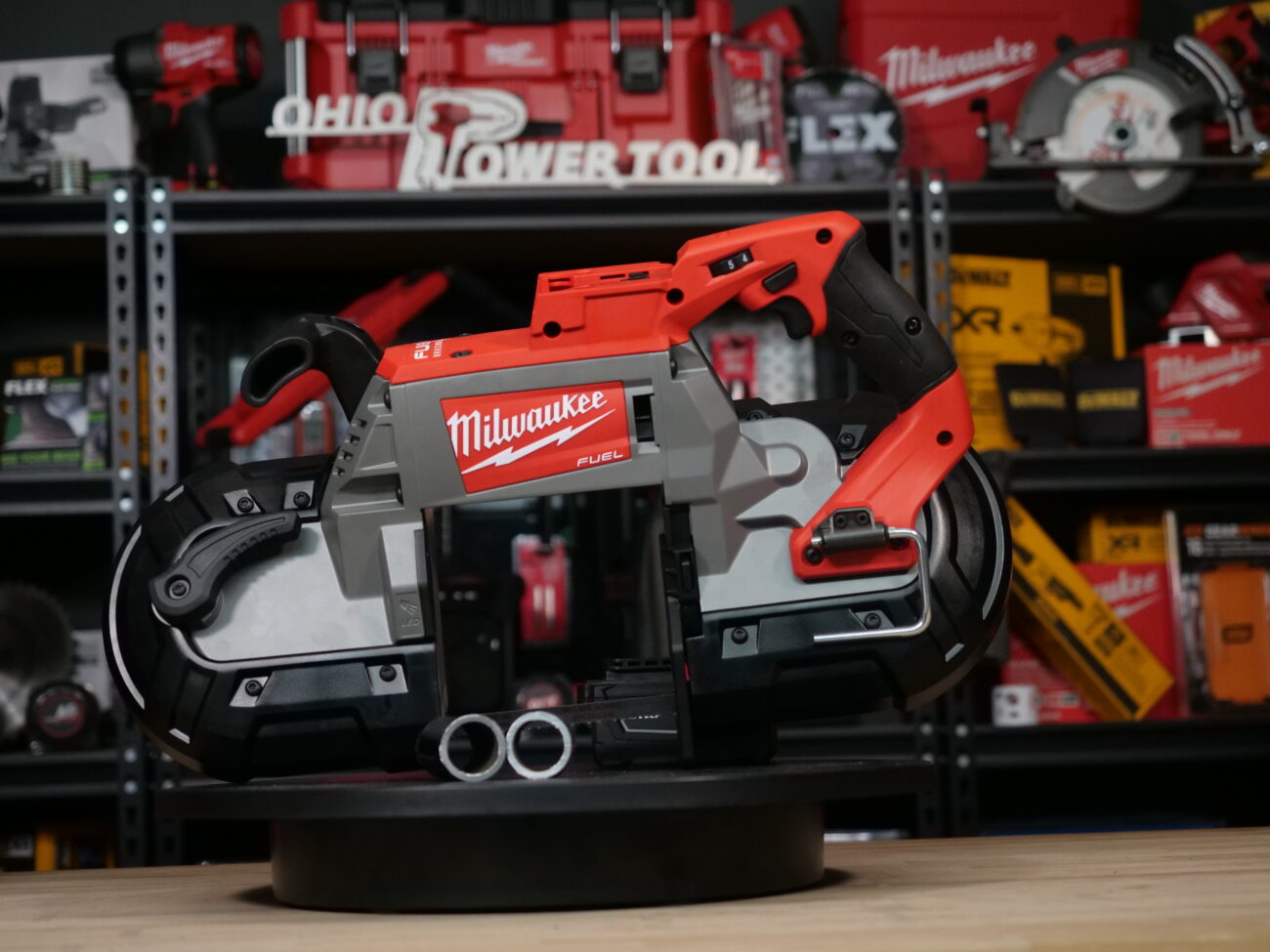
Verdict: Clean, quiet, and accurate, a true professional standard for metal pipe work.
Milwaukee M18 FUEL Pipe Cutter (3469-20)
Speed: 0:05 | Quality: 10/10 | Accuracy: 10/10 | Weight: 7 lbs | Performance: 10/10
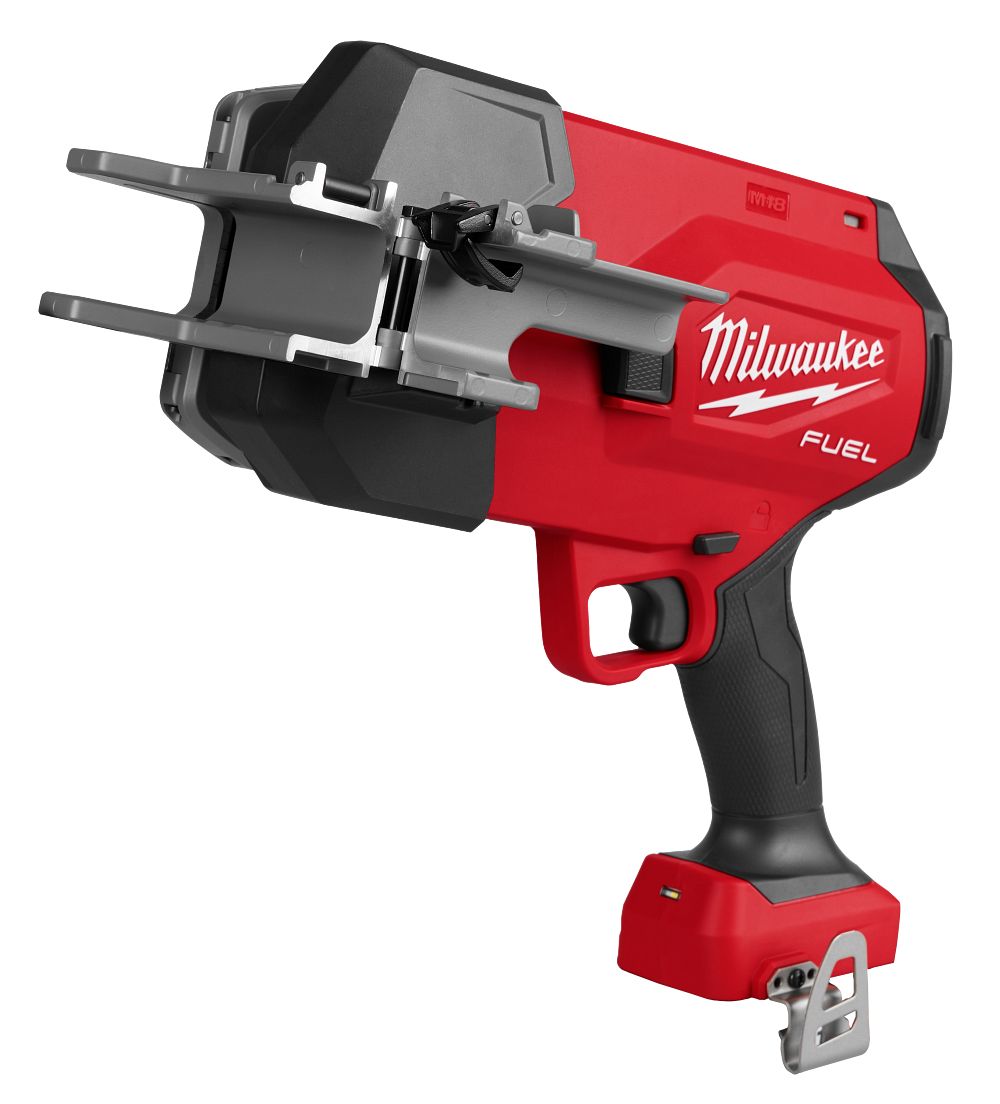
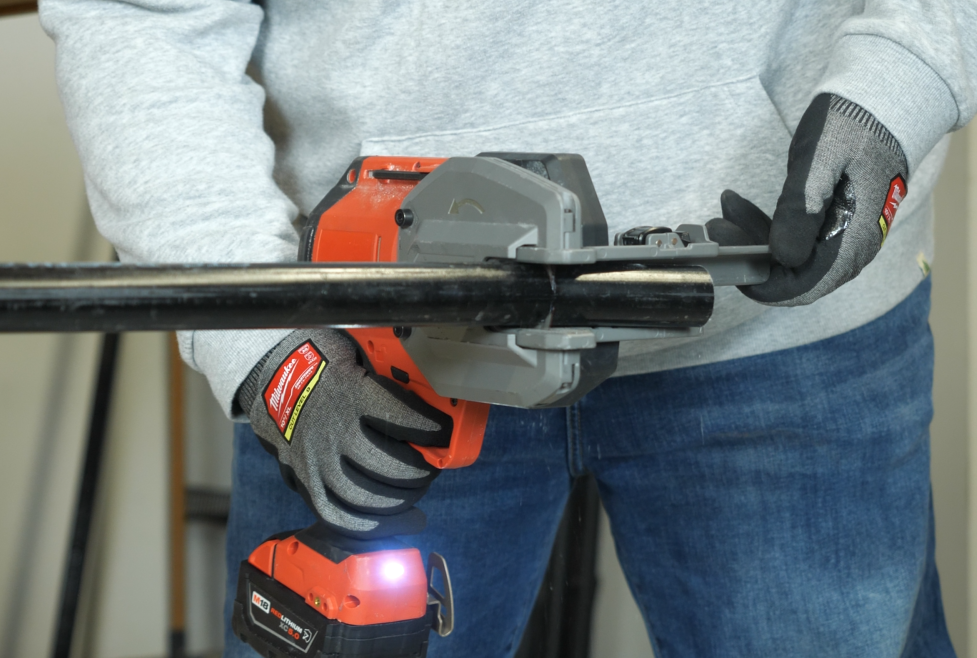
This one was the wild card, and the clear winner. Designed specifically for cutting steel pipe, the M18 FUEL Pipe Cutter performed exactly as advertised: five seconds flat, every cut perfect, no burrs, no sparks, and a consistent 90-degree angle.
It aligns itself automatically and locks the pipe in place for a flawless finish. Smooth, fast, and shockingly quiet, it made the process almost too easy. The only limitation is that it’s a one-trick pony, handling ½” to 1″ pipe only.
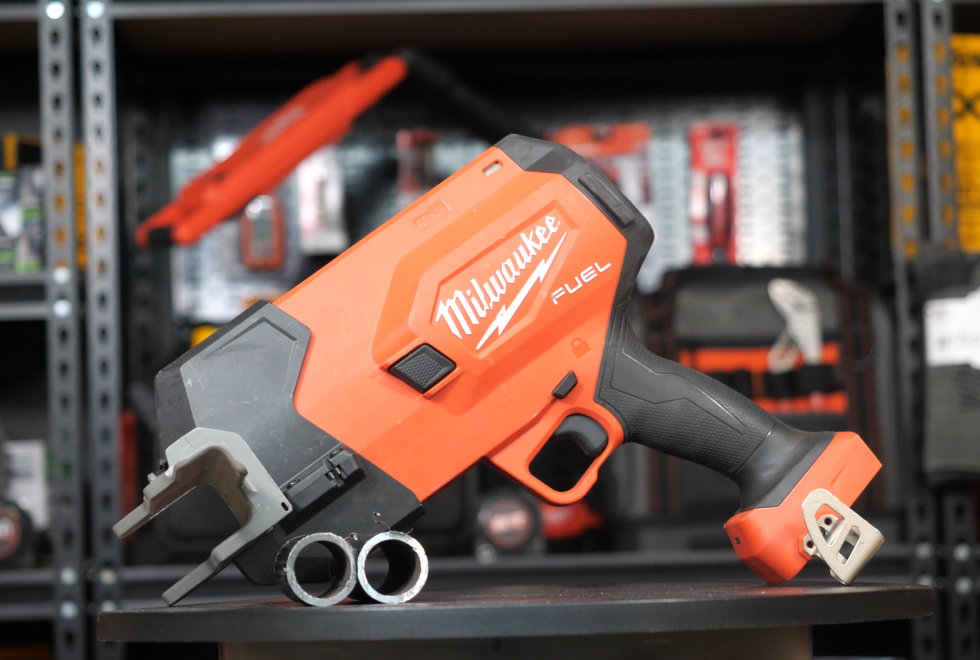
Verdict: The ultimate tool for anyone cutting pipe daily. Reliable, efficient, and purpose-built for this job.
The Final Results: Matching the Tool to the Task
After running every test, the Milwaukee M18 FUEL Pipe Cutter (3469-20) stood out as the fastest and cleanest performer, but that doesn’t make it the best choice for everyone.
If your day revolves around cutting steel or copper pipe, it’s worth every penny. If you need a more versatile tool that can handle strut, rebar, or multiple materials, the M18 Band Saw (2729-20) offers excellent accuracy and flexibility. And for demolition or field work in tight spaces, the DeWalt Recip Saw (DW-DCS380B) still delivers raw cutting power and speed at a lower cost.
The key takeaway? It’s not about which tool is “best.” It’s about which one is best for your workflow.
Lessons from the Test
Not every tool can or should cut through black steel pipe, but everyone told us something about its strengths and limits. The M12 Oscillating Multi-Tool reminded us that versatility has boundaries. The DeWalt Cut-Off Tool showed that compactness comes at a price. The Angle Grinder remains a reliable middle ground, while the Circular Saw, Band Saw, and Pipe Cutter prove how far cordless technology has come for serious metalwork.
In the end, purpose-built tools always perform best for specialized applications, but if you already own one of these, knowing how it performs on pipe could save you time, money, and frustration.
At Ohio Power Tool, we take pride in testing and servicing the tools we sell, so you don’t have to guess which one’s right. Whether you’re working in plumbing, electrical, HVAC, construction, or maintenance, we’ll help you match your needs with the best solution, fast, honest, and backed by decades of expertise.
Because when it comes to tough jobs, we know tools. Don’t hesitate to reach out at cs@ohiopowertool.com or 614-481-2111 with any questions, comments, or concerns, and be sure to follow us on all your favorite social media channels to stay in the know on all the latest announcements, deals, news, and more!

